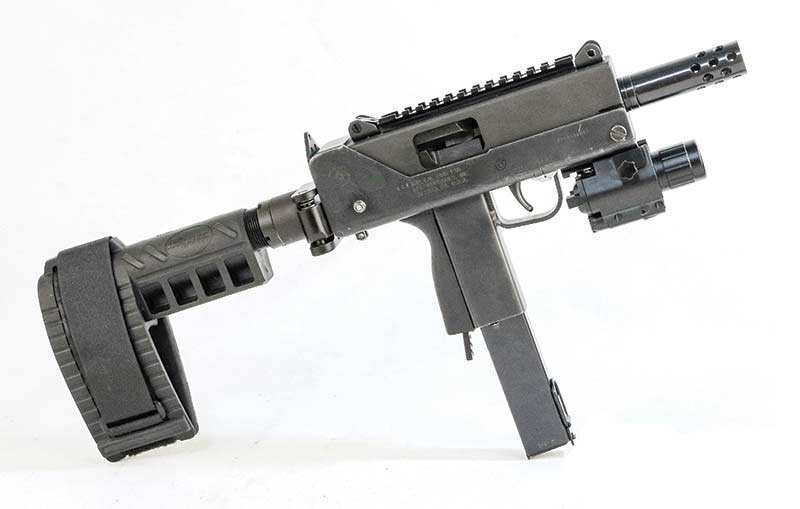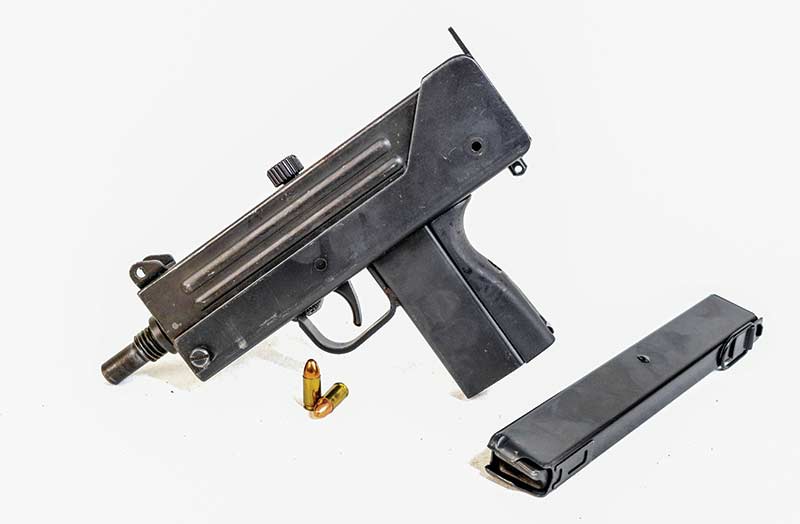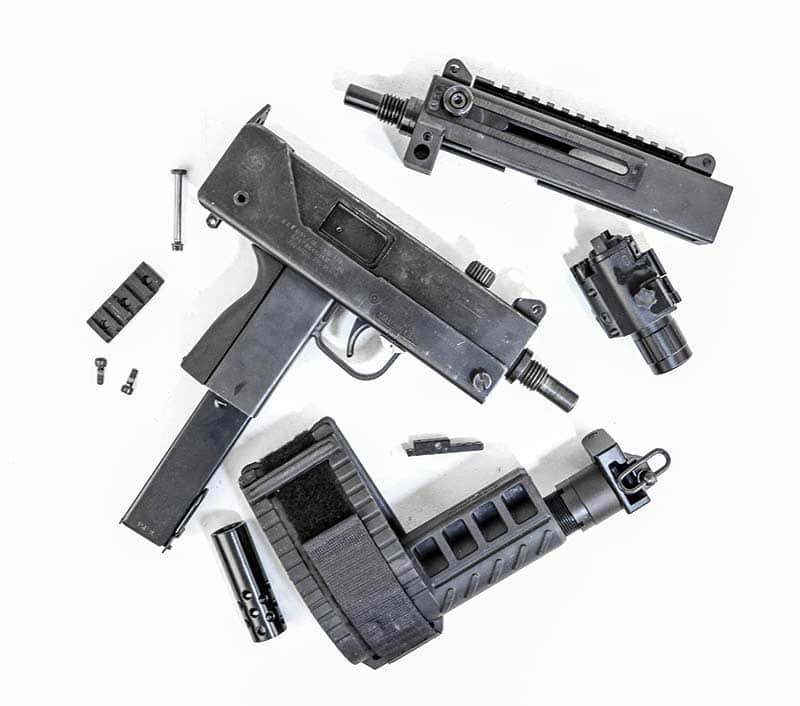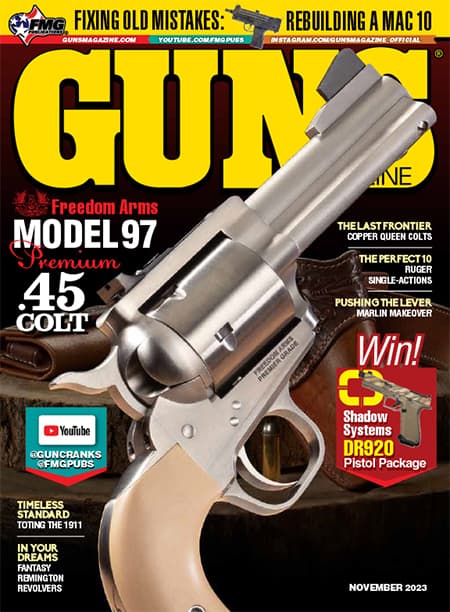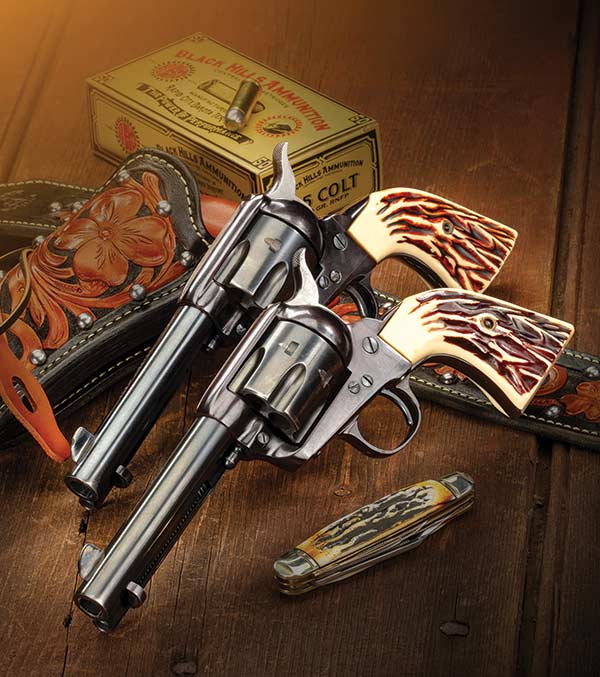MAC-10 Radical Restoration
Returning Balance To The Gun World
Gordon Ingram was a WWII veteran with a knack for guns. He returned from the war zone determined to build a better mousetrap. His mousetrap eventually became known as the Ingram Model 6. In production from 1949 through 1952, the Model 6 looked like a Thompson submachine gun in dim light but was much cheaper to build. Had it been available in 1939, the thing might have changed the world. As it was, the planet was already covered in a thin patina of submachine guns after WWII, so the Model 6 died a natural death.
Birth Of A Legend
Ingram dabbled in a variety of designs afterward until 1964 when he crafted his masterwork. The Ingram M-10 was the smallest, cheapest production submachine gun in the world at the time. With a collapsed length of less than a foot and chamberings in both 9mm and .45 ACP, the M-10 was a fistful of dynamite. The guns cycled around 1,000 rounds per minute on full-auto.
The M-10 was designed from the outset with manufacturability in mind. The receivers and ancillary bits were industrial stampings welded as necessary. Aside from the bolt, trunnion and fire controls, little else about the weapon required complex machining. The guns were heavy at 6.26 lbs. empty but they would fill a room with pain.
Brand-new full-auto M-10s sold for around $120 apiece between 1970 and 1973. Tack on the $200 transfer tax along with the obligatory BATF paperwork and civilian sales remained tepid. The brain trust at the Military Armament Company desperately wanted to sell Uncle Sam a zillion of the things to replace his M1911A1 pistols. Cooler heads prevailed, narrowly avoiding the messy de-fingerings of countless over-exuberant Army privates. Incidentally, while MAC-10 is arguably the coolest gun name since Colt distributor Benjamin Kittridge coined the moniker “Peacemaker” as a marketing ploy back in 1874, the MAC company never formally used the term.
MAC eventually folded and the assets were auctioned off. A subsequent company called RPB took up the mantle and tried a different tack. They took some of these SMG components and built-up semi-auto pistol versions of the M-10, which fired from the open bolt. Alas, you really can convert one of those old open-bolt M-10s to full-auto with nothing more than a pair of bolt cutters so the BATF soon put the kibosh on the plan. However, a small number of these open-bolt semi-auto guns were grandfathered and allowed to remain in circulation. Market forces have driven the prices of these rare weapons to astronomical levels.
Raw Material
I am ever on the prowl for cool gun deals at regional auctions advertised online. They are my kryptonite. While much of the fare is indeed pedestrian, stick with it long enough and you can find some proper gems.
The customized weapon in question looked like an octopus had a baby with a toaster. This blocky souped-up monstrosity had stuff sticking out of it all over the place but the auction pictures were of decent quality. I zoomed in really close to check out the markings on the side of the frame and saw “SAP RPB M-10.” Score.
SAP is short for Semi-Auto Pistol. RPB only placed these markings on their open-bolt semi-auto pistols. This could indeed be the foundation for something fairly epic.
The previous owner had absolutely violated this thing. The original upper receiver had been replaced with an aftermarket side-cocking version and the bottom of the frame had been drilled and tapped for a short length of accessory rail. Upon this rail was mounted an utterly cheesy cheap plastic airsoft tactical light. The back of the gun had been fitted with a mount for a bulky side-folding pistol-stabilizing brace. Just studying the thing online made me a bit queasy.
While hardly cheap, I still landed the gun for less than market value. Apparently, not just everybody had bothered to study the receiver markings in detail prior to the close of bidding. When the gun arrived, it was even more offensive than I had imagined.
Sourcing The Parts
There was a time when M-10 parts were both ubiquitous and cheap. You could order complete parts kits without a receiver for beans from a variety of gun magazines. Then, like most every other cool thing in life, the supply eventually dried up.
Nowadays, FTFIndustries.com still offers a respectable selection of M-10 spares but their parts are aftermarket. The newer bolt design sports a simplified extractor and the upper receiver lacks the pressed-in grooves designed to keep crud out of the action. Additionally, the charging handle is bigger and uglier. Regardless, as I couldn’t find an alternative, I ponied up the cash to buy a new 9mm barreled upper assembly.
Like all modern quasi-military weapons, the parts are all readily interchangeable. As a result, the new upper was just plug-and-play. However, once I got to the range, the results were underwhelming.
The gun just never ran well. Stoppages were commonplace and my patience grew thin. I cleared the thing and tucked it back into the gun box to simmer for a while.
I try to skim a little GunBroker.com most every day. If you’ve not had the pleasure, GunBroker.com is a 24/7 gun show stretching from coast to coast. Whether your particular proclivities orbit around 19th-century pocket pistols, rarefied trap guns, home-defense tools or uber-expensive classic full-autos, you can find all that and more on GunBroker. I love those guys. During one of my random forays, I tripped over an original 9mm RPB open-bolt upper receiver assembly. As these things do not come up for sale very often, I dusted off the plastic and made it mine.
It turns out the front trunnions on these guns came in two broad flavors. This one was too wide to fit in my frame but 20 minutes of careful attention with a fiber-reinforced cutoff wheel on my Dremel tool rectified the problem. A little touchup with some cold blue left the modified component looking near-factory. Now my classic RPB open-bolt M-10 SAP pistol looked like Gordan Ingram originally intended.
Trigger Time
Oh, this thing is awful. The trigger is as heavy as Aunt Edna’s prize Christmas fruitcake, and the ergonomics do not suit any actual human who has literally ever lived. The thing is awash in harsh square corners and it balances about as well as an orangutan left to wander a distillery unsupervised. At least, now it is reliable.
The open-bolt design synergistically combines with the crude pressed steel sights to make tactical accuracy more an aspiration than a practical reality. There’s no way to run the gun comfortably or well. Magazine changes are pretty timely, so there’s that. Most every other practical aspect of the gun is simply ghastly. Anything the open-bolt RPB M-10 SAP will do, a GLOCK 17 will do infinitely better.
Of course, there is a fair possibility whoever butchered this gun in the first place simply drew the same conclusion. Despite its undeniably homely visage, the ugly version I got from the auction would accept an optic and could be stabilized to fire offhand. Regardless, none of it justifies the crime against humanity that was the original transformation.
Ruminations
The frame still has a few ugly threaded holes it lacked when it left the factory, but it will now pass for an original if you squint. It also runs reliably, so all is finally right with the world though it took some proper effort to get there.
If whoever originally visited such mechanical blasphemy on this 1982 vintage classic gun is out there reading this, I sure wouldn’t admit it to anybody. You’ll no doubt have to answer for your crimes in some teleo-cosmological sense on the Day of Judgment. For now, these sins have, at great cost and effort, finally been made right. As an obsessive-compulsive gun nerd truly committed to his craft, I can finally rest easy.
If anybody wants a big box of bug-ugly MAC-10 accessories, I’ll let them go cheap. Just don’t tell me what you plan to do with them.
